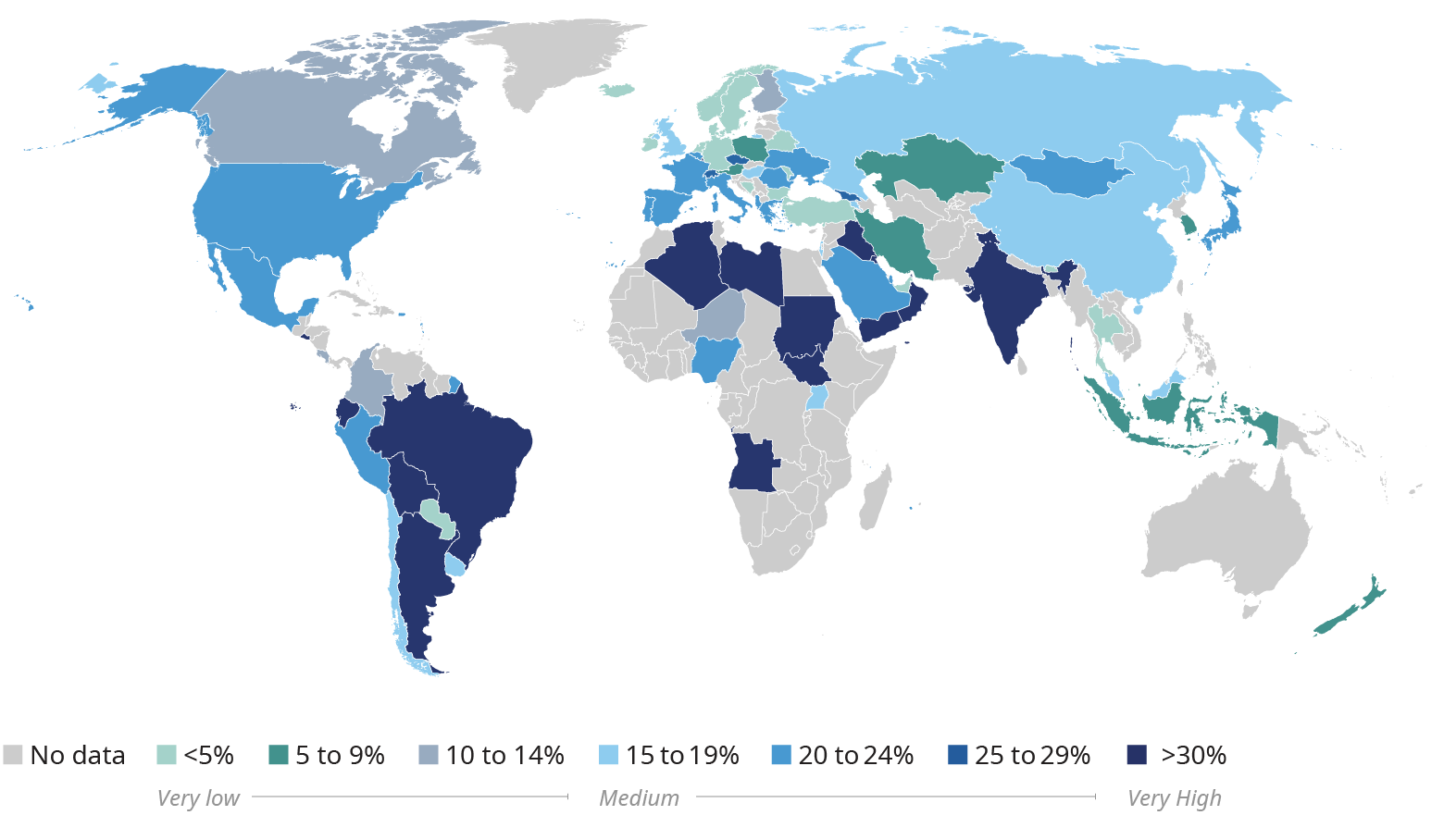Government procurement accounts for about $13 trillion worldwide (excluding military spending), representing on average around one-fifth of all government expenditures. Such high volumes of capital mean huge potential for savings — and Oliver Wyman has identified that governments could save up to 50% of procurement costs by reducing inefficiencies. While there is no one-size-fits-all approach, an essential step to unlock value for some countries is the establishment of a centralized Government Procurement Agency (GPA).
Oliver Wyman has mapped government efficiency through our Public Procurement Performance Index (PPPI), identifying that countries with a pressing need for optimization could save up to 25% in the short term by deploying a dedicated task force to review procurement contracts. Meanwhile, sustainable savings require a strategic and holistic rethinking and a centralization of the procurement function. This operating model could then lead to an additional 25% in savings . While the degree of centralization in procurement depends significantly on factors such as a country’s government structure and size (with smaller countries generally having the potential for more centralized procurement), all governments can leverage GPAs in some shape or form to optimize public sourcing.
However, achieving these fundamental structural changes requires time and the backing of senior stakeholders. Typically, the transformational process takes three to six years, contingent on the country’s level of maturity and institutional framework. Once established, it is important that GPAs mature and evolve with time to continue to reach higher levels of technological and operational sophistication. While optimizing and centralizing procurement operations require time and strategic attention, our analysis indicates that it is a worthwhile investment.
What governments spend money on
Public procurement covers all government demand needs, including health, education, public order, and economic affairs. Government spend can be categorized as follows:
- Vertical spend: Needs that are dependent on a specific sector or ministry; for example, the procurement of medical supplies
- Horizontal spend: Needs that are common across all governmental entities; for example, the procurement of IT software or office supplies, or the leasing of government fleet.
The distribution of a country’s public procurement spending varies based on their needs; however, there are common patterns. For example, Organization for Economic Co-operation and Development (OECD) data shows that health, economic affairs, education, defense, and social protection represent almost 80% of total expenses, with relatively little variability among countries.
The current inefficiencies in public procurement strategies
To stimulate economies, governments are increasingly seeking to improve public sector productivity and the provision of services. Despite the vital importance of efficient procurement and the increasing attention paid to efficient government expenditures, it is still common for there to be many areas that need enhancing across public procurement strategies, systems, and processes.

In 2018, Oliver Wyman published the first edition of the Public Procurement Performance Index (PPPI), a metric designed to rate the quality of public procurement and assess the potential for improvement across more than 75 countries. The PPPI is calculated using government indicators from the International Monetary Fund (IMF), the World Bank, the OECD, and other official sources. In addition, the index weighs the impact of public debt, fiscal balance, government expenditures, public procurement efficiency, public procurement maturity, and corruption (using an index).
The PPPI shows that highly indebted economies with growing fiscal imbalances and less efficient or nascent public procurement systems have considerable scope for improvement. Oliver Wyman’s experience and data show that in worst-case scenarios, the potential for savings is 35-50% of total government procurement spend (this varies based on the level of maturity of current procurement systems).
How countries can establish a successful government procurement agency
As we have laid out, some countries are more suited to centralization than others, but many states could benefit from some form of GPA. Setting up these agencies is a transformational journey that could take three to six years, depending on the country’s maturity and institutional setup. The approach consists of first, assessing the current situation; second, developing the strategy and operating model; and third, streamlining the overall procurement process. In parallel to these three steps, acquiring the right talent and building the right capabilities should also be prioritized.
Irrespective of the level of procurement integration that is deemed best (unified, hybrid, fragmented), we have identified six critical areas that require attention to boost public procurement maturity.
Growing levels of public debt and more demanding taxpayers will only increase the need for governments to deliver more, and with less. One way to unlock value is by improving the efficiency of the procurement function. This can save up to half of procurement costs, as we have laid out in this paper. Revamping a government’s approach to sourcing products, services, and goods and embarking on the journey toward procurement efficiency requires endorsement by all decision-making stakeholders and cooperation between both the public and the private sector. Short-term remedies can alleviate immediate cost pressures, but long-term sustainability and further savings require a policy and operating model transformation.
